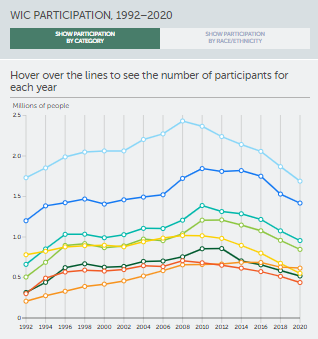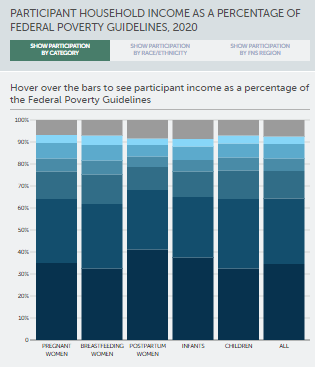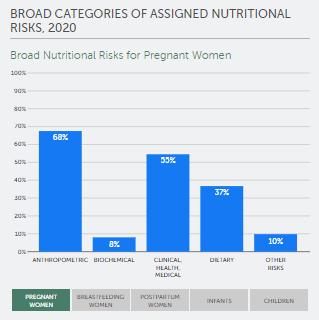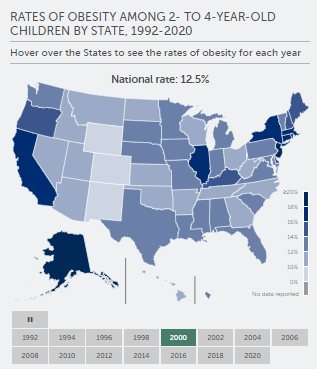Since 1988, FNS has produced biennial reports on WIC participant and program characteristics (PC) for use in program monitoring and managing WIC information needs. The PC 2020 report summarizes demographic, income and health-related characteristics and behaviors of participants certified to receive WIC benefits in April 2020.
The data for this report are based on WIC administrative records collected from all 89 WIC state agencies (50 states, the District of Columbia, five U.S. territories, and 33 Indian Tribal Organizations). PC 2020 represents information on a census of WIC participants with active certifications during April 2020. As a response to the COVID-19 pandemic, FNS replicated the PC 2020 data collection methods to capture active certifications in November 2020 among a convenience sample of nine large state agencies across the FNS regions.
Key Findings
- Seven million women, infants and children were certified to receive WIC benefits in April 2020, a decline of 10.2 percent from April 2018.
- In 2020, the percent of infant participants breastfed after birth was 71.6 percent; 22.1 percent were breastfed at age 6 months.
- More than half (64.3 percent) of participants reported an income below 100 percent of the Federal Poverty Guideline in 2020 compared to 69.5 percent in 2018.
- Rates of low hemoglobin or hematocrit among children declined with age and were consistently highest among African American children.
- Between April 2020 and November 2020, the number of individuals certified to receive WIC benefits across nine state agencies decreased by 2.3 percent. However, in seven of the nine states, the total number of children participating increased.






